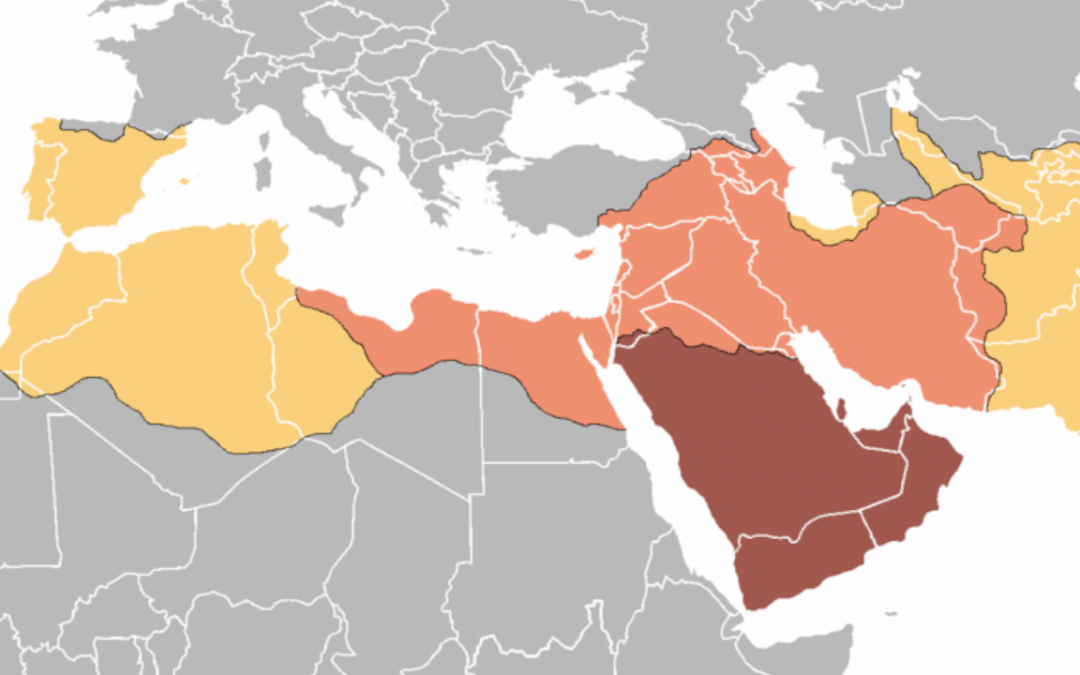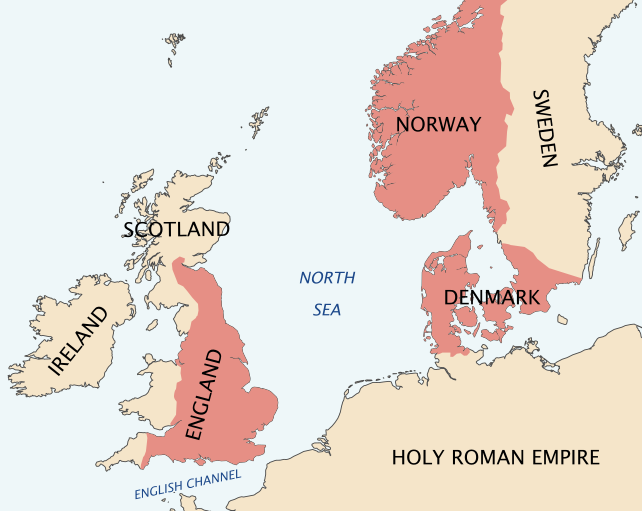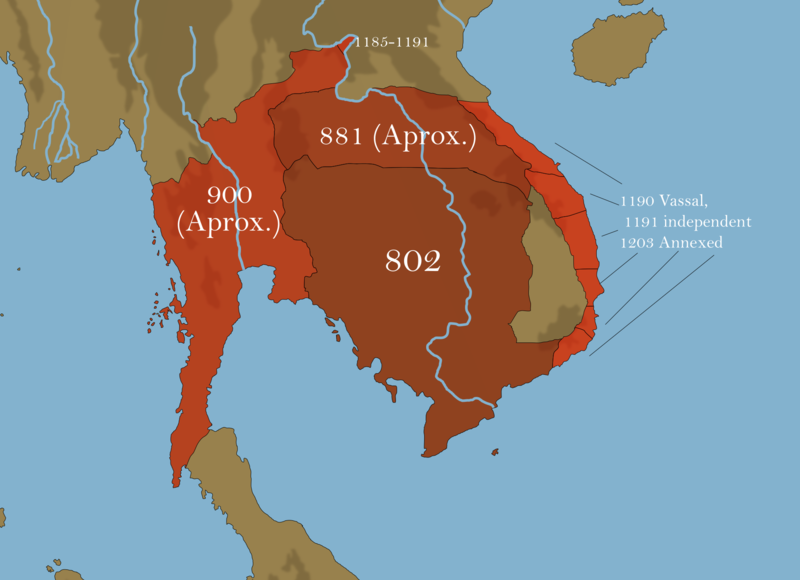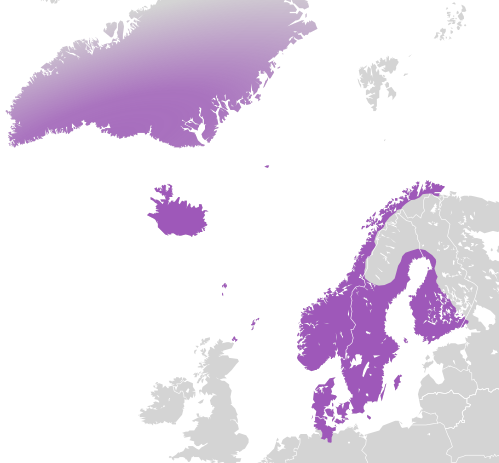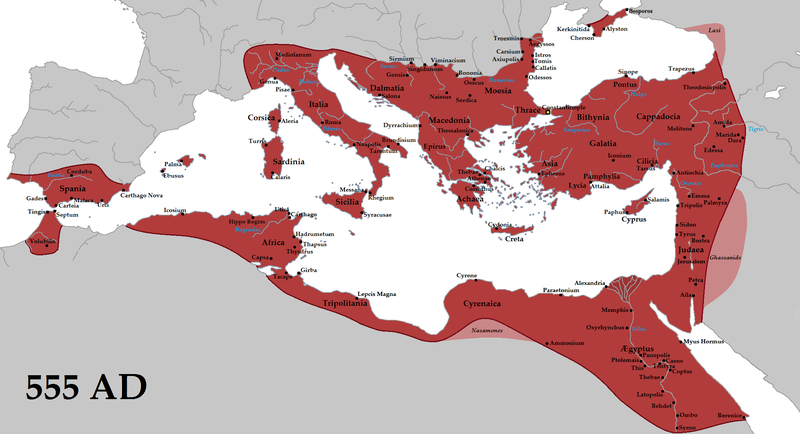The medieval age stretched from the 5th to the 15th century, give or take a few generations. It was a time of great change, beginning at the fall of Rome and the dark ages of European history. As Christianity took a strong grip in every corner of Europe, new kingdoms rose and fell. Great migrations saw large invasions and wars in every region of the continent. But the medieval age was not confined merely to Europe. Across the world powerful medieval empires forged history, from east Asia to Central America. The legacy of those medieval empires can still be seen in modern countries today. In this article we will look at what are perhaps the greatest powers of an incredible and brutal historical era.
10: North Sea Empire
Forged by a great Viking king, the North Sea Empire included England, Denmark, and Norway. For the time this was an incredibly large and wealthy empire. England was an especially rich territory, and the Vikings quickly got to extracting it’s wealth. Needless to say, no other power in Europe could challenge it’s collective armies. The king who ruled it was called Cnut the Great, an appropriately named warrior and gifted strategist. But he died just a few years after invading England, throwing the empire into chaos. With his sons and former supporters battling for control of his lands, the empire was divided. And so, this great empire fell as swiftly as it was built.
9: Inca Empire
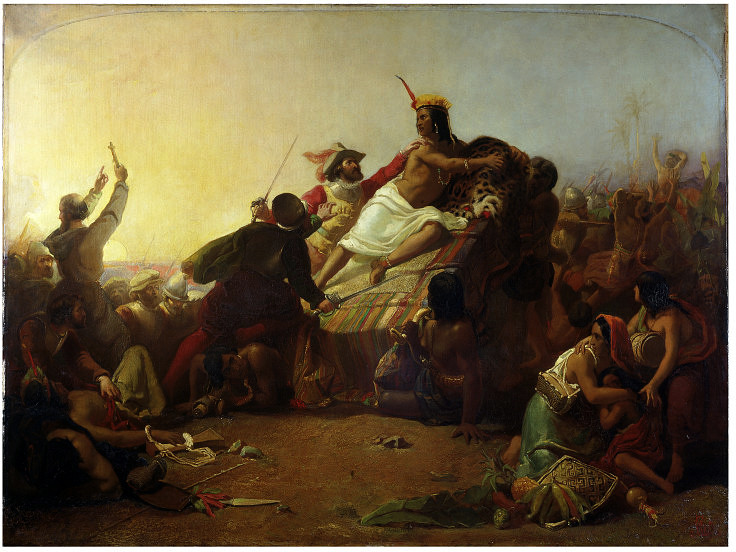
Stretching across much of South America’s western coast, Incan civilization was unique among other medieval empires. At it’s peak it commanded 2 million square kilometers of land. With no money or markets, the Inca operated a system free of monetary taxes. Instead, every man would need to perform some kind of service to the emperor. This could be either in terms of labor, or in wartime military service. In return the emperor would grant his subjects access to land for farming. The emperors were even known to provide them with food and drink. This might all sound chaotic but the empire was highly organized. Communication was surprisingly efficient. Using the Inca road network, couriers would literally run from village to village like a rely race.
The Incan language had no writing system and is still not understood by historians now. But despite all the strengths of the empire it survived for little more than a century. By the time the Spanish arrived the Inca had fought a brutal civil war. This allowed just a small band of Spaniards to utterly conquer the empire. If the Inca had been at full strength at the time history might be quite different.
8: Khmer Empire
You might never have heard of the Khamer Empire but in medieval Asia it was among the pre-eminent powers. Essentially a Cambodian empire, it was actually larger than the Byzantine empire. It began in the year 802 when the ruler of a much smaller kingdom unified all Khamer territories. Declaring himself lord of the universe, he was but the first of many in a long dynasty. He and his descendants were not seen only as a mere king by their subjects, but as The Khamer Empire survived for 6 centuries and helped shape the history of east Asia.
Capital of the Khamer empire was Angkor, a now famous ruin visited by countless tourists who have no idea how great the empire was. But Angkor was laid siege to in 1431 by a rebel force. Dissatisfied by the leadership, the rebels sacked and ruined the capital. The devastation was so great is directly caused the collapse of Khamer civilization, one of the greatest medieval empires of all.
7: Francia
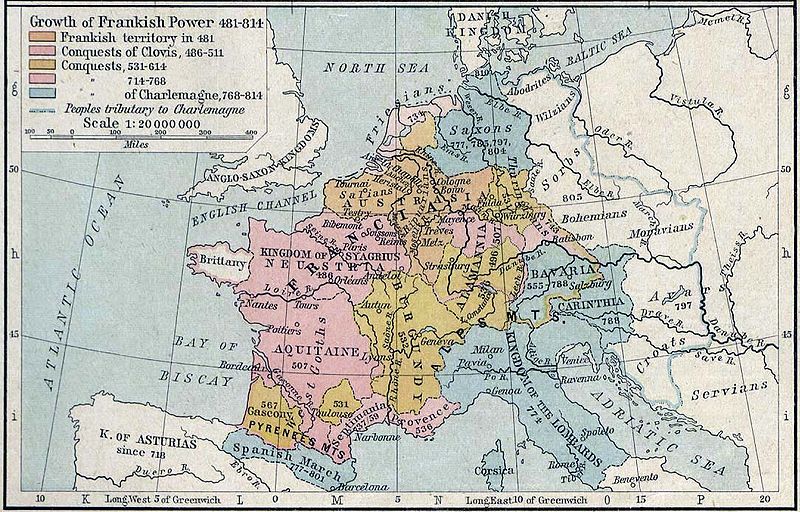
Also known as Frankland, Francia was a vast kingdom ruled by a Germanic people called the Franks. Covering much of France, Germany, and Italy, it was the most wealthy and powerful empire in Europe. The Frankish kings were the true guardians of Christianity on the continent also, building grand cathedrals and walled cities. Their military might too surpassed all others, hence why it stood strong for four centuries. It’s great kings such as Charlemagne were seen as the ideal of Christian leadership. Up until the very last ruler of Francia, the empire continued to conquer new lands and expand. In the end, Francia was so large it was simply divided up into multiple separate kingdoms. There was France, the Holy Roman Empire, and several other lesser states.
6: Mali Empire
Relatively unknown to those of us who are not students of African history, the Mali Empire was at one time famous for it’s vast wealth. In fact one of it’s rulers, Mansa Musa, is thought to have been the richest man to ever live. Historians tend to peg his wealth somewhere in the 400 billion dollar region. Another of it’s rulers was originally a slave who slowly rose to power while serving at the royal court. Mali’s great wealth came primarily from their access to the many gold and salt mines of North Africa. But trade too was a significant part of it’s economy. By the time European explorers had reached the kingdom, Mali had control over a large swath of territory. The modern country of Mali takes its name from the empire, despite it being gone since the 1600s.
5: Kalmar Union
Believe it or not, there was a time when all of Scandinavia was part of the same kingdom. Known as the Kalmar Union, it included Denmark, Norway, Sweden, Iceland, Greenland, and parts of Finland. Legally these were all separate countries. But the Union had a single monarch who made all military and diplomatic decisions. As the empire grew older, all domestic decisions were made by the monarch too, reducing all distinctions between each country to be merely theoretical. It began with the birth of a young Danish prince, who by accident of birth and royal marriage arrangements was heir to both his native Denmark and Norway.
When he died, his mother took control of the two kingdoms. Then a group of Swedish nobles requested she join their rebellion against the Swede king. When the rebellion succeeded, she also gained control of this new nation. And so Kalmar is one of the few medieval empires founded by a woman. Her adopted heir would thus be crowned king of Denmark, Norway, and Sweden.
4: Aztec Empire
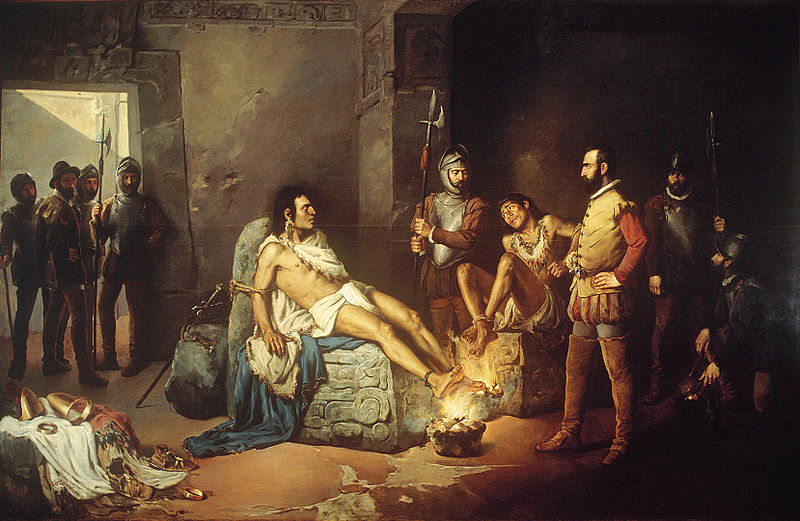
For a hundred years the Aztec reigned as the single dominant power of central America. Largely in what is now Mexico, their rise was due to brutality and military prowess. By making use of volcanic rock, their weapons were razor sharp. There are cases of horses being decapitated by a single swing of a volcanic weapon. This combined with their aggressive military tactics meant the Aztec empire was able to crush all others. Subjugating their neighboring states, the goal of Aztec warfare was not primarily to win new territory. Instead it was to take prisoners who could then be sacrificed to the gods. The Aztec believed in many great and powerful gods, and that human sacrifice was needed to win their favor.
This made the Aztecs so hated that when the Spanish explorers arrived on the continent, as large alliance of native American peoples joined forces. Together with the Spanish they were able to destroy the Aztec empire. And so one of the greatest medieval empires died after just a century.
3: Byzantine Empire
When the Roman empire fell there were several successor states that emerged in the aftermath. Most were relatively small and short lived. But Byzantium was gigantic and grant. Based in the rich city of Constantinople, it’s lands included Turkey, Greece, Egypt, and much of the middle east. The Balkans and Africa’s northern coast were also part of the Byzantine empire. Clearly this gave them a large population and many important trading routes. The wealth and splendor of the empire was unmatched. As the rest of Europe descended into the dark ages, Constantinople shone as a shining example of what civilization can achieve.
Surviving for over a thousand years, it is one of the only medieval empires to actually survive the medieval age. Though it spent it’s last few centuries in gradual decline, it helped spread Christianity to Europe and beyond. Over time the empire became distinctly Greek, with Greek becoming the official language in the place of Latin. Eventually Constantinople fell the the Ottoman empire, which itself would live on for many centuries and be extremely rich and powerful.
2: Umayyad Caliphate
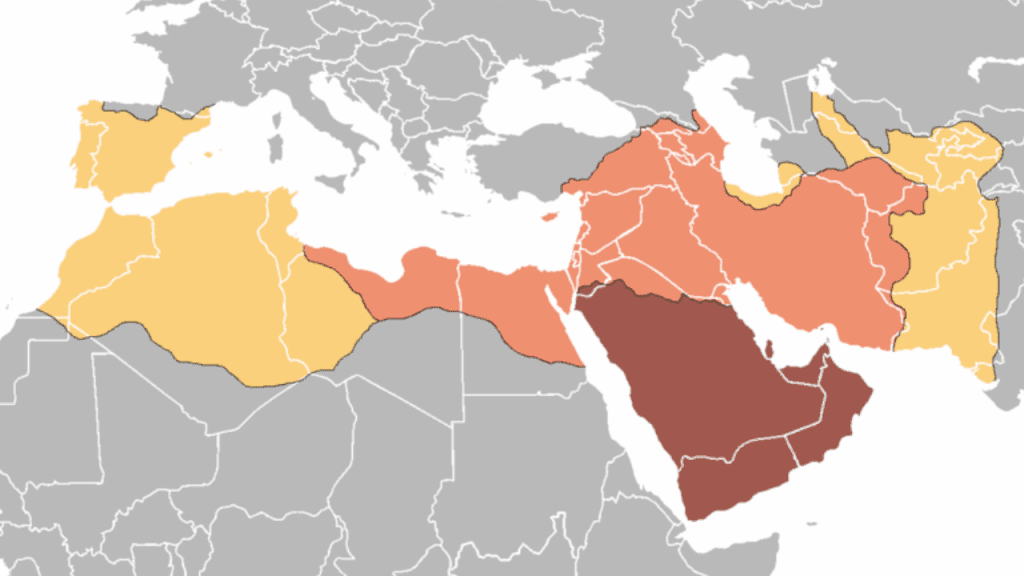
In the years after the Islamic prophet Muhammad died, Islam expanded at an incredibly fast rate. Stretching across the middle east, million were converted in rapid timing. Four large empires known as Caliphate were founded and ruled over these new Muslims. The Umayyad Caliphate was the second, and largest, of these empires. Holding all of Arabia under it’s control, the empire stretched from India to the western edge of North Africa, and even parts of Europe. Spain and Portugal were even under Umayyad rule. But Christians held many positions of power within the Caliphate, and were not taxed as heavily as Muslims were. Perhaps this tolerance is why they were able to hold such a large landmass.
1: Mongol Empire
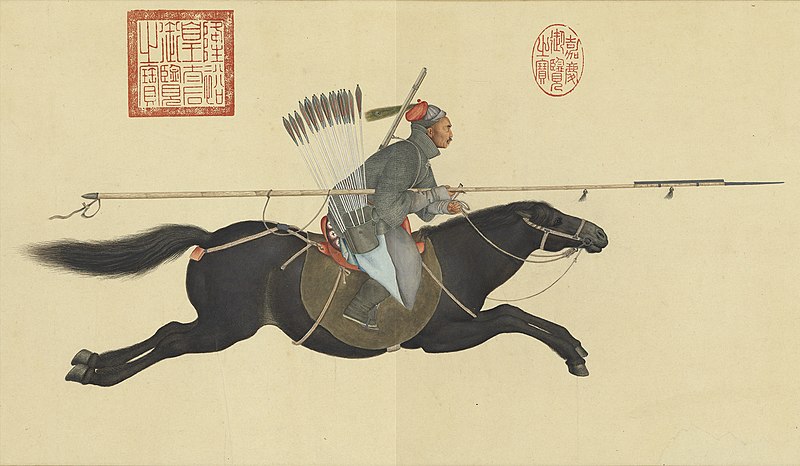
The largest contiguous land empire the world has ever known, just one other empire would amass more land. Founded by the notorious ruler Genghis Khan, the empire was known for it’s ferocity and barbarism. Genghis Khan was born into a divided Mongolia, with the tribes nomadic and disunited. Then he showed them how strong Mongols could be if they fought together rather than against one another. With haste they conquered many rival kingdoms who to any reasonable historian seem to have had every advantage. Leaving millions dead in their wake, the Mongol hoard swept through Asia, swallowing up vast territory as it went. The empire included all of China, Mongolia, Korea, Central Asia, Russia, much of the middle east and even parts of Europe.

